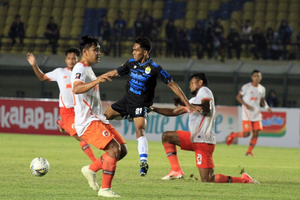
Sports and Radio
Up to the mid-twentieth century, the best way to share the prompt dramatization of a game was all things considered to play or to join in. However, at that point came the radio. The additional worth of the radio-contrasted with the printed media is the chance of live revealing. All along the radio exploited this resource. Live radio revealing gave the impression of being there, of being an observer of something passionate and emotional. Broadcasters learned rapidly to give the impression of thick and sensational occasions. Another benefit of the radio was nevertheless is its exceptionally quick speed. Results furthermore, scores can be diffused momentarily in a very adaptable program. Also, the radio medium can reach individuals whenever anyplace, i.e., in the vehicle, in the working environment, around the ocean, and so on. Radio broadcasts and their correspondents can without much of a stretch be interconnected so that radio audience members can essentially move from one spot to another. At last, radio announcing succeeds at interviews, one veritable kind of radio. كورة لايف is the place where you can watch every life without any obstacles.
Telecasting games

A few games have been birthing assistants for the business and social leap forward of radio and TV a birth that prompted the concurrence of a few sorts of sports with the media. In the USA it was boxing that, through live transmissions on radio, made that medium and itself well known. On April 4, 1921, the radio station KDKA broadcast for the absolute first time a game, in particular about from the Pittsburgh Engine Square Garden. On July 2 of that very year two New York radio broadcasts (WJY and WJ2) broadcast the heavyweight boxing big showdown battle between Jack Dempsey and Georges Carpentier in New York. David Sarnoff, later in his life leader of NBC, had radio sets introduced in theaters, dance halls, what’s more, outbuildings. Around 300,000 boxing fans paid the extra charge it was spent for the reproduction of France after the First World War!- and were entranced. That was the underlying start for the massively effective dissemination of the radio medium in the United States. In 1927 around 40 million Americans paid attention to the live transmission of the Dempsey versus Sharkey battle, this time at home, before their own remote sets.
What happens in the early days?
Currently, in those early days, that’s what evaluations showed reports from games were more famous among men than among ladies an example that exists today in many nations. In the last part of the 1930s the battle between two significant burden fighters, Joe Louis and Max Schmeling, scored a 58% rating among American families radio and fighters, connected at the hip, battling their way through the market. From the beginning, however, the media foundation demonstrated exceptionally unfriendly toward the radio trailblazers. Paper distributors in different nations pushed through legislative measures to safeguard themselves. Subsequently, regulations or strategies restricted news writing about the radio. This likewise impacted the games segment. In Great Britain, for instance, the BBC radio channel (British Broadcasting Corporation, established in 1922) prohibited sports news before 7 p.m. until 1926. Indeed, even in 1928, during the Olympic Summer Games in Amsterdam, BBC sports journalists were as it was permitted to peruse news organization releases solely after 6 p.m. At the 1932 Olympic Summer Games in Los Angeles, broadcasting time was restricted to 15 minutes of the day. This time, it was the entertainment world that pushed through the action





